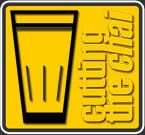Another Anonymiser
One thing that many users liked best about Firefox was its Ctrl+Shift+Del feature, which made the process of clearing up personal data collected while surfing on the WWW disappear at the simultaneous click of three buttons (even in absense of this feature, would still be the great browser that it is). But the problem with online privacy is that the evidences of where you have been surfing to isn't limited to your local hard disks. We bloggers also keep a track of our visitors using different tools and derive joy from where our visitors had come from and looking for what. Most websites do the same and so do the search engines. The privacy policy of sites usually say "information will be disclosed where we are obliged or permitted by law." Unless you aren't doing anything unlawful (by the way porn can be interpreted as unlawful under many laws in different territories) you don't have much to worry. But then, the revelations can sometimes be embarrassing. Recently AOL released the search data of 657,427 users (AOL search is powered by Google). Though AOL later apologised, but the damage was already done. The data is still available freely on the web. This has also happened before.
We have reasons to be afraid. After all it is our privacy at stake. And there isn't one big brother watching over, but a huge number of potentially divulging brothers of all sizes. There are many internet based anonymisation tools available, some free, others cost money, some are effective, many aren't. I had tried a few which promised to keep my identity camouflaged, but my exact IP address and other details appeared on the stat tracker of this blog. Nevertheless, they were of a great help during the recent blog block.
Now's here another anonymiser called Topark – which is in fact a tweaked Portable Firefox browser (I'm yet to make it undergo some tests, so this post shouldn't be interpreted as a recommendation. It is more of a news than an analysis). Topark claims to "turn any internet terminal into a secure connection" and is "developed and maintained by just one dedicated university student."
You can carry it anywhere with you in an USB and plug it to the machine and run the programme and "and it will launch a Tor circuit connection, which creates an encrypted tunnel from your computer indirectly to a Tor exit computer, allowing you to surf the internet anonymously."You may have heard about those heavily advertised second-rate software packages like Anonymizer, SafeSharing, InvisibleIP, SecretSurfer, etc. Well, not only do they charge you money and/or a subscription fee, but they are bloated and full of useless components. They also require an installation which leaves tracks on your computer. How is that anonymous? Try Torpark; its small, portable, clean, open-source, free of spyware/adware, and free.
But how does it actually work? Hacktivismo provides the details:When a user logs onto the Internet, a unique IP address is assigned to manage the computer’s identity. Each website the user visits can see and log the user’s IP address. Hostile governments and data thieves can easily monitor this interaction to correlate activity and pinpoint a user’s identity.
Torpark causes the IP address seen by the website to change every few minutes to frustrate eavesdropping and mask the requesting source. For example, a user could be surfing the Internet from a home computer in Ghana, and it might appear to websites that the user was coming from a university computer in Germany or any other country with servers in the TOR network.
It is important to note that the data passing from the user’s computer into the TOR network is encrypted. Therefore, the user’s Internet Service Provider (ISP) cannot see the information that is passing through the Torpark browser, such as the websites visited, or posts the user might have made to a forum. The ISP can only see an encrypted connection to the TOR network.
However, users must understand that there are limitations to the anonymity. Torpark anonymizes the user’s connection but not the data. Data traveling between the client and the TOR network is encrypted, but the data between the TOR network and websites is unencrypted. Therefore, the user should not use his/her username or password on websites that do not offer a secure login and session (noted by a golden padlock at the bottom of the Torpark browser screen).
Torpark is dedicated to the Panchen Lama.
You can download Torpark v1.5.0.7 from here.










































1 Comment:
Even though Torpark is a portable application, there are many people who might be interested in trying it out who are not comfortable with a "no install" installation. Thus, I have created a Torpark installer and a step-by-step guide for using it.
If anyone is interested, the installer and guide are available from http://www.dailycupoftech.com/?page_id=165.
Post a Comment